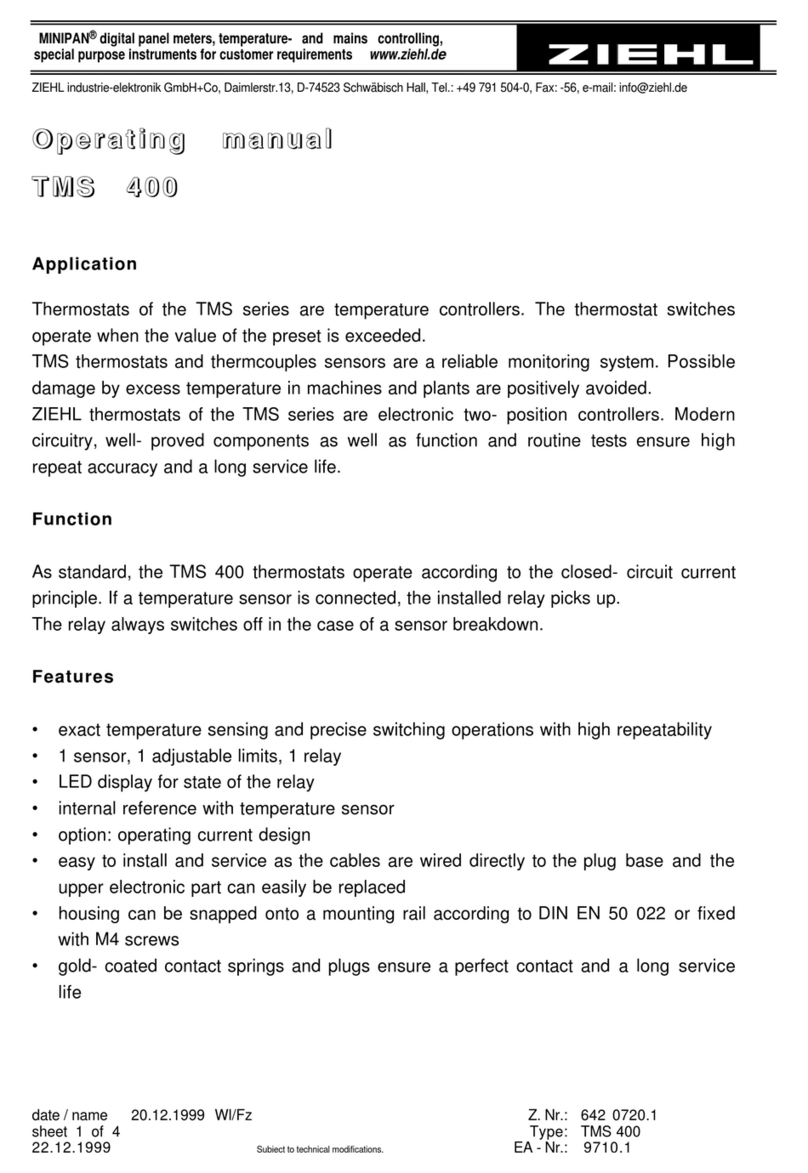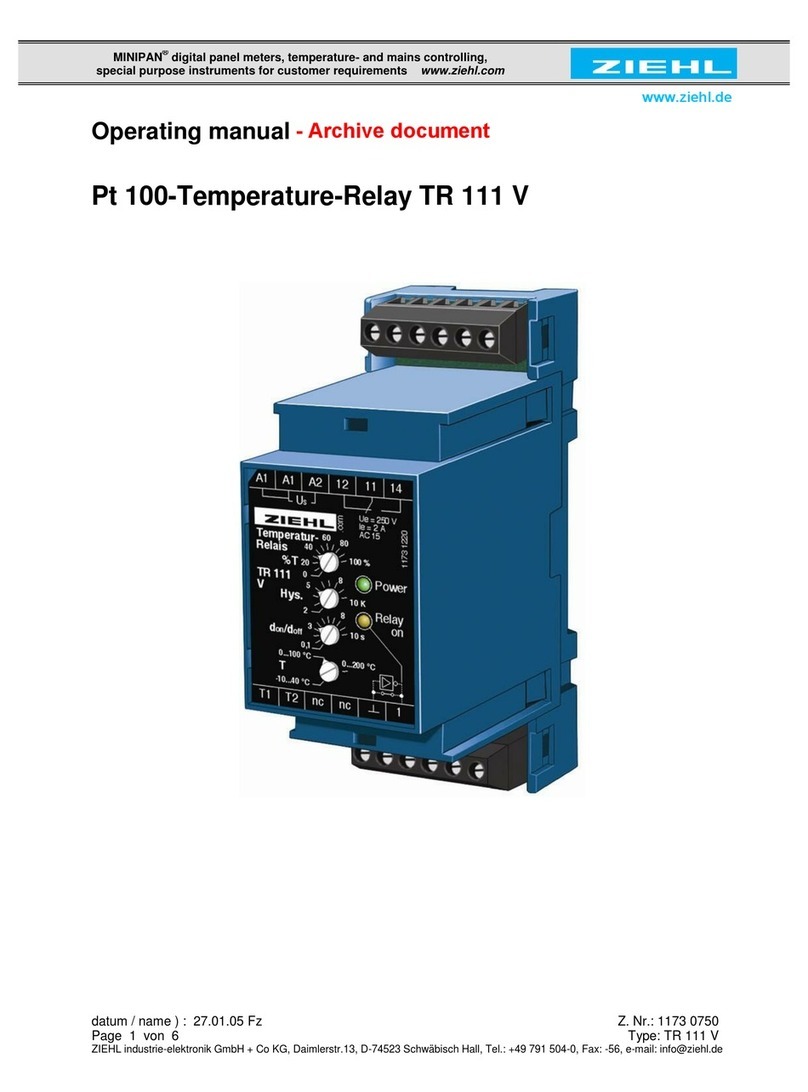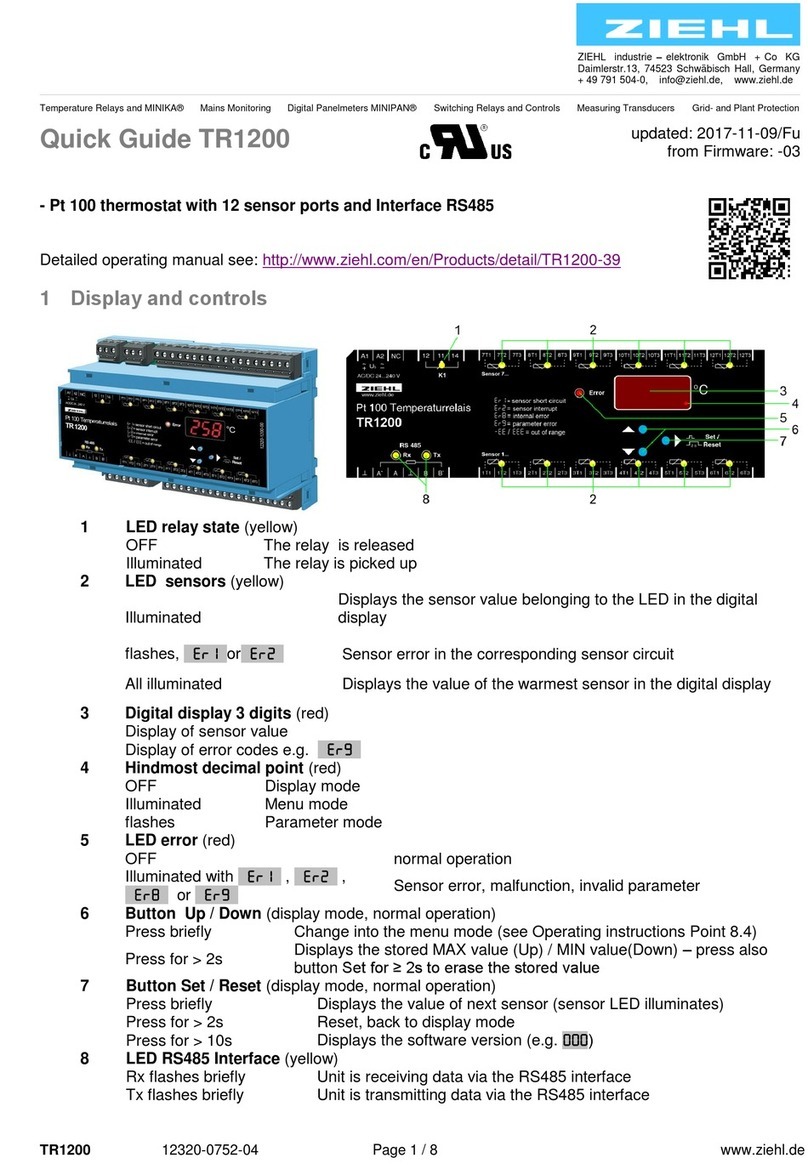date / name : 09.10.2001 WL/Su Z.Nr. : 1120 0752.2
Page 7 of 10 Type : TR 600
printed: 15.10.2001 Subject to technical modifications EA -Nr. : 1116.2
Technical data
Rated supply voltage Us: AC/DC 24 – 60 V (see lateral type plate)
Tolerance DC-supply DC 20 - 81 V (0,85 x 24V…1,35 x 60V)
Tolerance AC-supply AC 20 - 66 V (0,85 x 24V…1,1 x 60V)
Rated supply voltage Us: AC/DC 90 – 240 V (see lateral type plate)
Tolerance DC-supply DC 81 - 297 V (0,9 x 90V…1,35 x 220V)
Tolerance AC-supply AC 76 - 264 V (0,85 x 90V…1,1 x 240V)
Power consumption < 8 VA
Frequency 0 / 50 / 60 Hz
Relay output: 1 change-over (CO) contact
Switching voltage max. AC 415 V
Switching current max. 5 A
Switching power cos ϕ=1 max. 1250 VA (ohmic load)
max. 48 W at DC 24 V
Derating factor cos ϕ=0,7 0,5
UL electrical ratings: 3 A Resistive, 240 VAC
C300/Q300
Rated operational current Ie:
AC15 Ie = 1,5 A Ue = 400 V
Ie = 3 A Ue = 250 V
DC13 Ie = 2 A Ue = 24 V
Ie = 0,2 A Ue = 125 V
Ie = 0,1 A Ue = 250 V
Recommended fuse for contacts T 3,15 A (gL)
Expected life mechanical 3 x 107operations
Expected life electrical 1 x 106operations with AC 250 V / 5 A
2 x 106operations with AC 250 V / 3 A
2 x 107operations with AC 250 V / 1 A
Insulation: VDE 0660 / VDE 0160
Test voltage between supply VDE 0110 / AC 415 V / I Gr.C
voltage Us, protected earth, relay
contacts and against sensors/ RS485 2000 V DC
Sensor connection : 6 x Pt 100 acc. to DIN 43760 / IEC 751
Measuring accuracy ±0,5 % of value ±1 Digit
Sensor current ≤2 mA
3-wire sensor Pt 100 + RL= max. 490 Ω
2-wire sensor RL= 0 …50,6 Ωadjustable
Measuring delay time t M<1,5 s (normal operation, depends on number
of connected sensors)
Switch points: 6 , digital adjustable
Relay operating function standard = closed circuit current principle (NC)
option = operating current (NO)

































